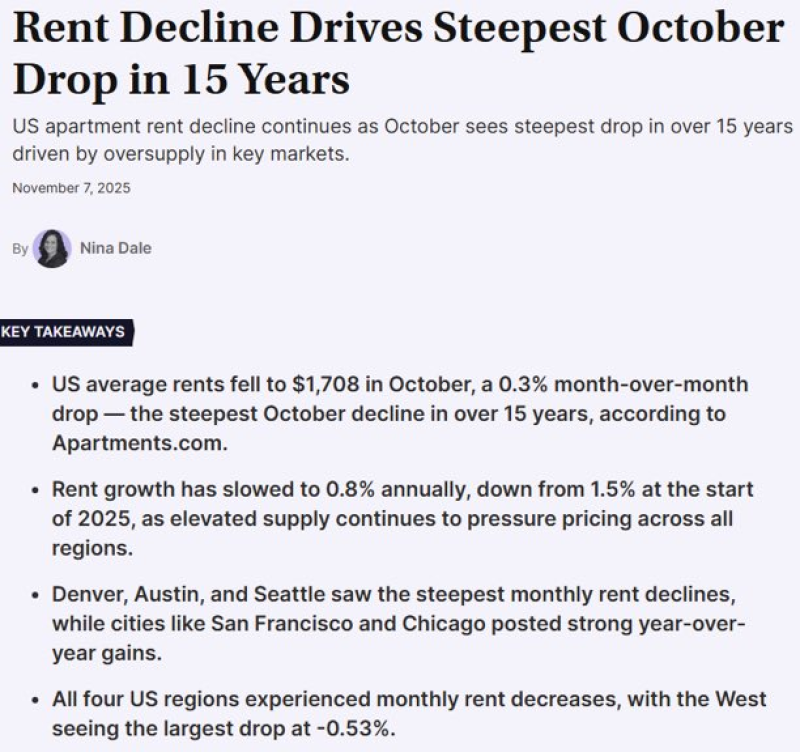⬤ Falling rents matter a lot for inflation because shelter makes up a big chunk of the CPI calculation, but there's a catch—it takes at least six months for rent changes to show up in the official numbers. This lag means the current rent decline won't fully appear in CPI data until mid-2026. Recent data shows US average rents dropped to $1,708 in October, down 0.3% from September—the steepest October decline in over 15 years, driven by too much supply in major markets.

⬤ Policy discussions around tax changes could still affect rental markets, housing costs, and construction. Some proposals might squeeze developers and lead to financial trouble if credit tightens, while others could push people out of expensive cities. These bigger risks sit in the background of the latest rent numbers, which show less pressure on consumers and hint that inflation might cool faster than expected.
⬤ Market watchers note that declining rents "provide a strong inflation offset which is rate-cut-outlook positive, which is stock-market positive." With annual rent growth slowing to just 0.8% and every US region posting monthly drops—especially the West at −0.53%—CPI data should gradually reflect softer shelter costs as the lag catches up.
⬤ For investors, the mix of lower rents, CPI timing quirks, and shifting policy creates a potentially favorable environment. Shelter inflation has been the stubborn piece keeping headline CPI elevated. The steep October rent drop, plus growing supply in cities like Denver, Austin, and Seattle, suggests inflation is bending lower, raising hopes for rate cuts and better market conditions ahead.
 Saad Ullah
Saad Ullah

 Saad Ullah
Saad Ullah

